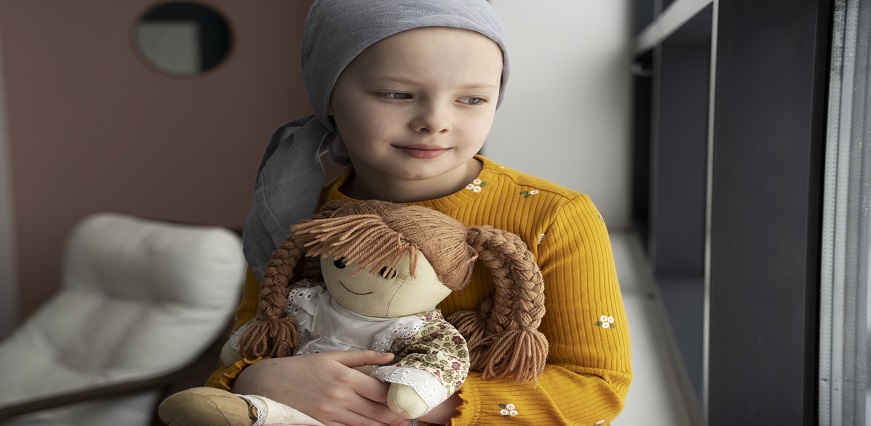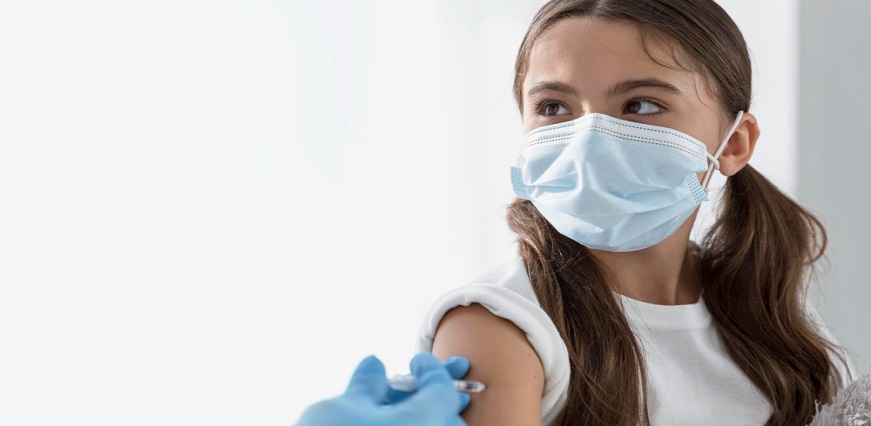





No lab centers are available in this city

By - Max Lab
Feb 15, 2023 | 5 min read
International Childhood Cancer Day is celebrated across the world every year on 15th February. Its purpose is to increase community participation and international support for childhood cancer awareness. Since 2002, Childhood Cancer International (CCI) observes 15th February as International Childhood Cancer Day to deliberate on the cancers that affect millions of infants, children, and young adults. Let us know more about this global collaborative campaign below:
For International Childhood Cancer Day 2023, the theme is part of the three-year campaign for ICCD (2021-2023) - Better Survival is achievable. In 2021, the theme, #throughourhands, focused on giving tribute to children and adolescents surviving cancer. The following year observed the theme of #throughyourhands to pay tribute to the healthcare professionals working in the paediatric cancer field.
In 2023, International Childhood Cancer Day’s theme is #throughtheirhands is dedicated to the families and caregivers of children with cancer and their positive impact.
According to the World Health Organisation (WHO), the goal is to achieve at least a 60% survival for childhood cancer by 2030. For this purpose, it is important to learn more about the types of cancer affecting children. Here are 7 major categories of childhood cancer found in infants, children, and adolescents:
On International Childhood Cancer Day, creating awareness about leukaemia is paramount because it is one of the most cancers observed among children across the globe. It causes abnormal production of white blood cells (WBCs) in the bone marrow, restricting red blood cells (RBCs) and platelets from surviving in the bloodstream. Acute Lymphocytic Leukaemia (ALL) is acute blood cancer, spreading the disease quickly, and the bone marrow tends to produce immature blood cells in the body. Due to this, the leukaemia-affected cells reach most of the body organs rather swiftly causing symptoms such as bleeding gums, bone pain, recurrent infections, fever, swollen lymph nodes and pale skin.
When abnormal cell formation takes place in the brain or spinal cord of an infant or young child, it is generally indicative of tumours. Parents, caregivers, and medical practitioners also need to understand that not all brain and spinal cord tumours are life-threatening in nature. Some of these tumours are benign. Since more than 26% of all childhood cancers are found in the brain or spinal cord, creating world awareness at International Childhood Cancer Day is essential.
Every year on International Childhood Cancer Day, special meets are organised to discuss neuroblastoma, a rare type of cancer that develops in the early nerve cells, known as neuroblasts, in children. It is common to occur in infants and children below five years of age. As this cancer attacks the sympathetic nervous system of a child, nerve fibres of the spine and adrenal glands on top of the kidneys get highly affected. The indicators of this cancer in children are based on which body part is affected.
This is a type of cancer affecting the white blood cells of children. Virus-killing and immunity-building WBCs known as lymphocytes change and multiply rapidly in the body due to Hodgkin’s or non-Hodgkin lymphoma. The good news is that both kinds of lymphoma are curable. International Childhood Cancer Day is one of the best platforms to discuss upcoming healthcare initiatives and technology to provide the best treatment plans for Hodgkin’s and non-Hodgkin lymphoma.
Wilms tumour, also known as nephroblastoma, is the most commonly found cancer in the kidneys of infants and young adults. The sub-categories of Wilms tumour, favourable histology and anaplastic histology, are based on how the abnormal cells appear under the microscope. Since this type of renal cancer is frequently observed in the paediatric age group, learning more about it at International Childhood Cancer Day 2023 is highly encouraged.
Rhabdomyosarcoma is a soft tissue cancer (sarcoma) that forms malignant cells in a child’s muscle tissue. Its types are categorised according to the location of the tumours. It can spread to other parts of the body through tissue, blood, and the lymph system. Certain genetic mutations are seen are the main cause of rhabdomyosarcoma in children. Thus, parents with a family history of this type of cancer should get their children tested as soon as possible.
An eye cancer that affects children below the age of 5 is known as retinoblastoma. It begins in the light-sensitive layer of the eye called the retina and can affect the vision of the child. Since retinoblastoma can spread to other body parts, timely diagnosis and treatment are important for the child’s survival. The aim of International Childhood Cancer Day is to increase the knowledge base about this cancer and come up with lucrative steps for its awareness.
This International Childhood Cancer Day, various events and talks will be organised at inter-governmental organisations and non-profit organisations. It is highly encouraged to participate in these collaborative meetings to increase awareness about childhood cancer.












Sign up takes less than 60 secs and gives you access to your offers, orders and lab tests.
Looks like you are not registered with us. Please Sign up to proceed
OTP will be sent to this number by SMS
We have successfully received your details. One of the agents will call you back soon.
 To reach our help desk call 9213188888
To reach our help desk call 9213188888
No Lab Centers are available in this city
Looks like you are not registered with us. Please Sign up to proceed
OTP will be sent to this number by SMS
Not Registered Yet? Signup now.Looks like you are not registered with us. Please Sign up to proceed





 7982100200
7982100200.png)
Comments